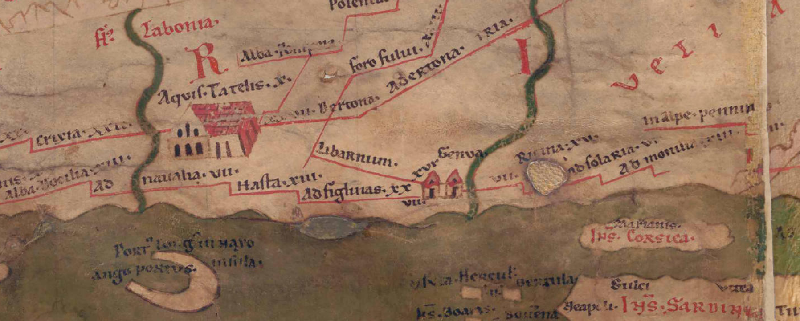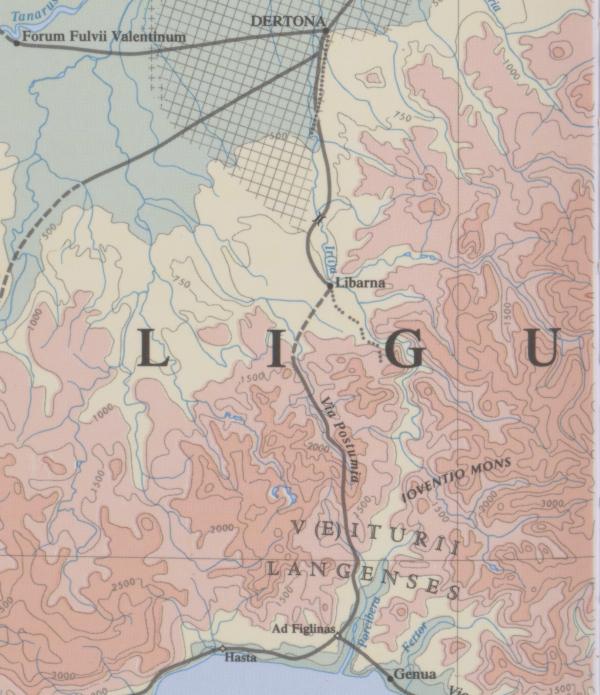
Tabula Peutingeriana – Pantalla individual
| Topónimo (simplificado): | Libarnum |
| Nombre (moderno): | Serravalle Scrivia |
| Imagen: |  Al detalle de la imagen |
| Topónimo antes | - Dertona |
| Topónimo después | XVI (?) Genva (Genua) |
| Imagen alternativa | --- |
| Imagen (Barrington 2000) |
 |
| Imagen (Scheyb 1753) | --- |
| Imagen (Welser 1598) | --- |
| Imagen (MSI 2025) | --- |
| Pleiades: | https://pleiades.stoa.org/places/383694 |
| Wikipedia | https://it.wikipedia.org/wiki/Libarna |
| Área: | Italia |
| Tipo de topónimo: | Topónimo sin símbolo |
| Cuadrícula: | 2B5 |
| Color del topónimo: | negro |
| Tipo de viñeta: | --- |
| Itinerario: | Libanum (294,5) |
| Nombres alternativos (diccionarios): | Libarna (DNP) |
| Nombre A (RE): | Libarna |
| Nombre B (Barrington Atlas): | Libarna (39 D4) |
| Nombre C (TIR / TIB /otros): | Libarna (TIR L 32, 84) |
| Nombre D (Miller): | Libarnum |
| Nombre E (Levi): |
|
| Nombre F (Ravenate): | Levarmis (p. 71.01), Levarnis (p. 71.05) |
| Nombre G (Ptolemaios): | Λιβάρνα (Λίβαρνον) (3,1,45) |
| Plinius: | Libarna (3,49) |
| Strabo: |
|
| Datación del topónimo en la TP: | --- |
| Fundamento para la datación: |
|
| Comentario al topónimo: |
Kommentar (Talbert): |
| Bibliografía: |
[1] Desjardins, Table, p. 106, col. 2, no. 1 (unter no. 43). |
| Última elaboración: | 30.10.2025 21:23 |
Cite this page:
https://www1.ku.de/ggf/ag/tabula_peutingeriana/trefferanzeige_es.php?id=3327 [zuletzt aufgerufen am 12.11.2025]